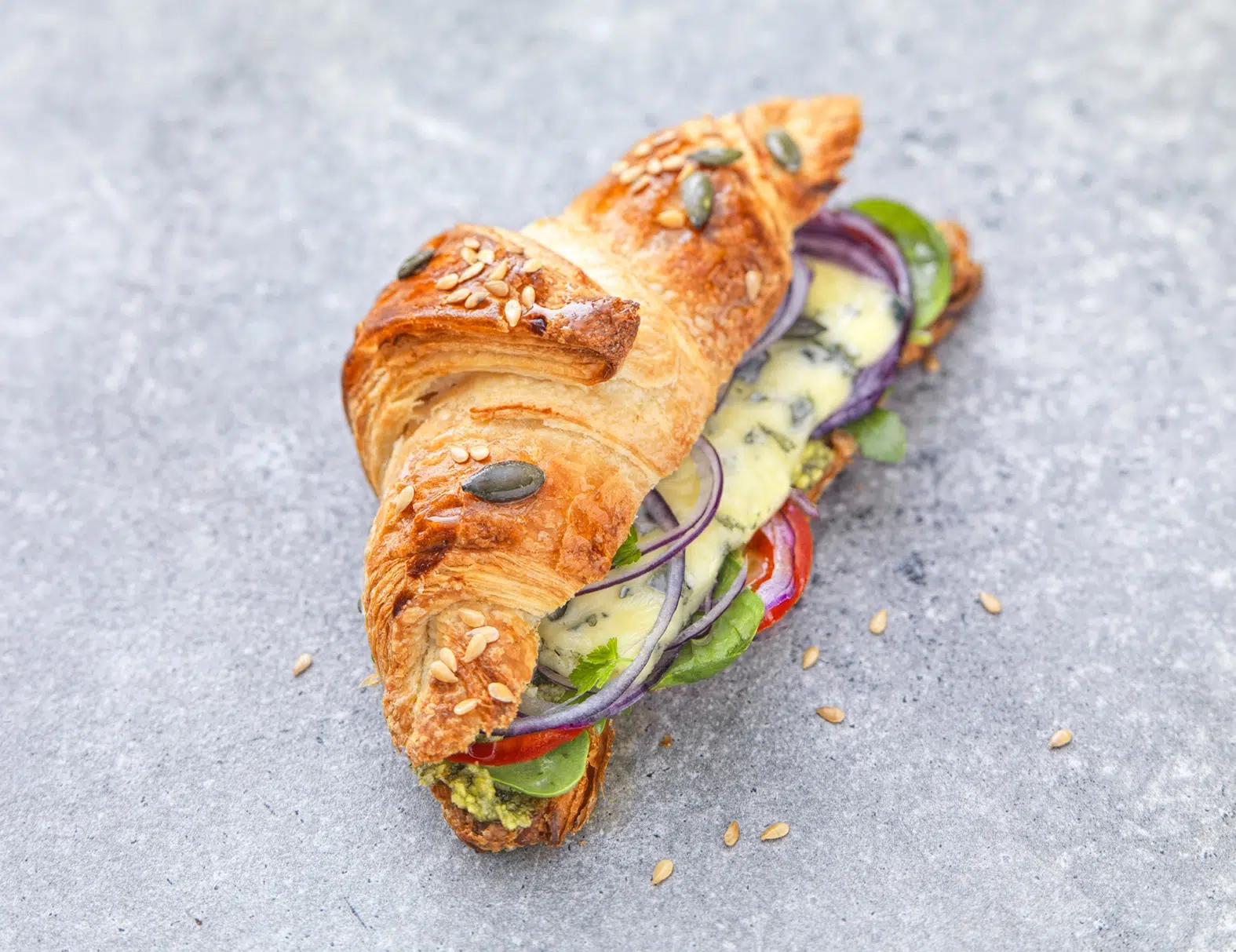The croissant, an emblem of French pastry artistry, carries a rich history and evolution that has captivated food enthusiasts worldwide. Known for its buttery layers and crescent shape, the croissant is not merely a breakfast staple but a symbol of culinary craftsmanship that embodies tradition, innovation, and global influence.
Historical Origins: A Taste of Vienna

Contrary to popular belief, the croissant’s roots are not French but Austrian. The story begins in 1683 with the Battle of Vienna. The legend suggests that the croissant was inspired by the Austrian kipferl, a crescent-shaped pastry that dates back to the 13th century. To celebrate the defeat of the Ottoman Empire, Viennese bakers crafted the kipferl in the shape of a crescent, mirroring the symbol found on the Ottoman flags. This tale, while romanticized, underscores the pastry’s deep connection to European history.
The French Transformation
The croissant we know today began its transformation in the early 19th century when Austrian officer August Zang opened a Viennese bakery in Paris in 1839. His bakery, Boulangerie Viennoise, introduced Parisians to the kipferl. The French, known for their culinary ingenuity, adopted and adapted this pastry. By the mid-19th century, the French had reinvented the kipferl into what we now recognize as the croissant. They incorporated laminated dough, a technique that involves folding butter into dough multiple times to create thin layers, resulting in a flaky, buttery texture.
Crafting the Perfect Croissant
The art of making a croissant is a meticulous process that requires skill, patience, and quality ingredients. The key to a perfect croissant lies in its laminated dough. The process starts with preparing a détrempe, a basic dough made from flour, water, yeast, and a small amount of sugar and salt. This dough is then chilled and rolled out, and a slab of cold butter is placed on top. The dough is folded over the butter and rolled out again, a process known as turning. This process is repeated several times to create the distinct layers.
The dough must be handled with care to ensure the butter remains cold and does not melt into the dough. After the final turn, the dough is rolled out one last time and cut into triangles, which are then rolled into the familiar crescent shape. The croissants are left to proof, allowing the yeast to ferment and the dough to rise. Finally, they are baked until golden brown, resulting in a pastry that is crispy on the outside and airy on the inside.
Global Influence and Variations

While the traditional butter croissant remains a beloved classic, variations have emerged around the world, each reflecting local tastes and ingredients. In France, pain au chocolat, a croissant filled with dark chocolate, is a popular variant. Other French variations include almond croissants, which are filled with almond paste and topped with sliced almonds and powdered sugar.
In Italy, the cornetto is similar to the croissant but tends to be sweeter and softer, often filled with jam, custard, or Nutella. In Spain, croissants are sometimes dipped in a syrup glaze, giving them a sweet, glossy finish.
In recent years, the croissant has crossed cultural boundaries, leading to innovative fusion pastries. The cronut, a croissant-doughnut hybrid created by Dominique Ansel in New York City, took the world by storm in 2013. Other creative takes include the matcha croissant from Japan, filled with green tea-flavored custard, and the savory croissant sandwiches popular in many Western countries.
The Modern Croissant Craze
The 21st century has seen a resurgence in the popularity of croissants, driven by social media and the global trend of artisanal baking. Instagram-worthy pastries have become a sensation, with bakeries around the world showcasing their unique takes on the traditional croissant. This visual appeal, combined with the croissant’s inherent deliciousness, has cemented its status as a modern culinary icon.
Artisan bakeries have also elevated the croissant-making latoto process, focusing on high-quality, locally sourced ingredients and traditional baking techniques. This return to craftsmanship has led to a renaissance in the appreciation of the croissant, with food critics and enthusiasts alike praising the attention to detail and the depth of flavor in these hand-made pastries.
The Science Behind the Layers

The croissant’s signature flakiness is a result of the science of laminated dough. The layers of butter and dough interact during baking to create steam, which puffs up the layers and creates the airy texture. This process, known as leavening, is crucial to achieving the perfect croissant.
Temperature control is vital throughout the croissant-making process. The dough and butter must be kept cold to prevent the butter from melting prematurely. If the butter melts, it will be absorbed into the dough, eliminating the layers and resulting in a dense, greasy pastry. Professional bakers often chill their dough between turns to maintain the right temperature and ensure the butter remains in distinct layers.
The Croissant’s Role in French Culture
In France, the croissant is more than just a pastry; it is a cultural institution. The croissant is a staple of the French breakfast, often enjoyed with a cup of coffee or hot chocolate. French bakeries, or boulangeries, take great pride in their croissants, with many dedicating themselves to perfecting the art of croissant-making.
The croissant also plays a role in French social life. Cafés across France serve croissants as part of their breakfast offerings, providing a quintessentially French experience for both locals and tourists. The ritual of enjoying a croissant at a café, often accompanied by a leisurely read of the morning newspaper, is a cherished part of French daily life.
Conclusion: A Timeless Delight
The croissant’s journey from its origins in Austria to its transformation in France and its global variations is a testament to its enduring appeal. This humble pastry, with its buttery layers and delicate flakiness, continues to captivate palates around the world.
As the croissant evolves, embracing new flavors and techniques, it remains a symbol of culinary excellence and tradition. Whether enjoyed as a simple breakfast treat or an elaborate dessert, the croissant stands as a timeless delight that transcends borders and generations. Its story is a reminder of the power of food to bring joy, create memories, and connect cultures.
Read More Article About “Fajitas Meksiko: Lezatnya Hidangan dari Negeri Sombrero“




